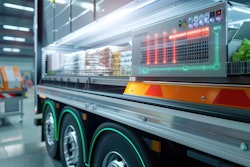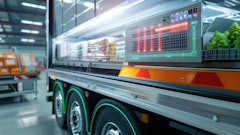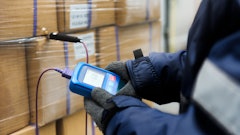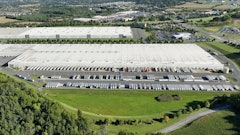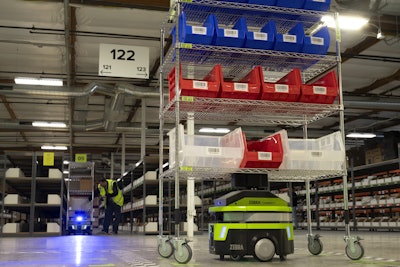
Smart technologies for the warehousing and logistics industry are evolving rapidly. Advances in artificial intelligence (AI) have made autonomous mobile robots (AMRs) smarter and safer to work with, while hardware innovations enable them to travel faster, recharge quicker, and carry heavier payloads. Although strategies for optimizing the efforts of human labor have been slower to evolve, they’re beginning to catch up, empowering workers to pick more items faster and with greater accuracy.
There are clear signs that companies and their associates agree that new technologies like robotics are a powerful tool to improve productivity, safety, and are even essential to attracting and retaining talent. According to Zebra’s latest Warehousing Vision Study, 93% of warehouse associates agree that new technologies are essential for attracting and retaining talent. New technologies like wearables, mobile computers, and mobile robots have become essential for simplifying tasks, reducing physical strain, and ensuring smooth integration with automated systems.
These findings underscore the fact that we’re at the forefront of a trend that integrates human ingenuity with robotic precision to redefine fulfillment efficiency and productivity.
Warehouses still need to keep the lights on
There’s been a lot of discussion and debate in recent years about so-called “dark” warehouses, where automation completely replaces human workers. As attractive as this concept may seem to an industry perpetually challenged by labor availability and turnover, there’s too much change to make it practical. Packaging, customer demand, supply chains and more are constantly in flux, and every shift creates new challenges for automation. As a result, many operations have already turned to robotics as a flexible and cost-competitive way to augment their human workforce.
Progress has already been made in this space, but most solutions to date have focused almost exclusively on optimizing the robots. Finding ways to do the same for their human co-workers, and ensuring that they work seamlessly together, is a new wave of innovation that’s just getting started.
The evolution of collaborative fulfillment
Until recently, most AMRs in fulfillment operations have relied on swarm-based logistics or individual “follow me” systems. Both methodologies have admirable strengths, but each also suffers from limitations that restrict utilization and cost-effectiveness.
Swarm systems coordinate a fleet of AMRs to work collectively throughout a warehouse. Although this approach revolutionized fulfillment over a decade ago, workloads are frequently unbalanced, with underused robots sitting idly while waiting for undirected workers to find them.
The “follow me” methodology, introduced a few years later, took the opposite approach, pairing each picker with a single robot. A display on the robot provides limited guidance, but the AMR restricts the picker’s speed, holding fast workers back.
The hidden costs of underutilization
Visit any warehouse with a traditional AMR system and you’ll probably see a lot of robots sitting idly, especially in the induction and pack-out areas. This “dwell time” is caused by the inherent variability of any fulfillment operation. Order demand and timing inconsistencies frequently cause surges of robots or workers that leave one or the other waiting for availability.
Operators in these environments have typically faced the difficult choice of hiring more labor, reallocating workers needed elsewhere, or buying more robots. These challenges are driving smarter, better-integrated solutions that leverage the strengths of legacy systems while overcoming their weaknesses. At the same time, more attention is being paid to unit economics. AMRs are no longer a novelty — they’re expected to drive value, ideally from day one.
Toward more collaborative ecosystems
Although any good warehouse management system (WMS) can generate optimized picking paths, workers typically haven’t had much guidance once they’re on the warehouse floor. In addition, many aspects of picking are still ripe for optimization, even in AMR-assisted workflows. Time spent walking, finding and confirming the right item, and even locating the right robot are all regular challenges.
Modern warehouses and fulfillment centers are overcoming these obstacles by fostering greater collaboration between human workers and robots. They’re moving beyond traditional automated systems to environments where technology complements human skills, enhancing productivity and reducing errors.
Digitizing the human
Wearable devices are among the most significant innovations currently being deployed in the AMR industry. These allow individual workers to be precisely directed in concert with robotic solutions while increasing speed and accuracy.
Warehouse workers have responded positively to these devices, which allow them to work more efficiently with less effort. In a recent warehousing vision study conducted by Zebra Technologies, 89% of associates responded that tools like these make them feel more valued by their employers. In addition, 85% of workers and 82% of decision-makers agree that the increased use of technology and automation helps boost frontline productivity.
Wearables also empower operations leaders by providing real-time visibility into the entire picking operation and greater flexibility. Instead of relying solely on “black box” algorithms, warehouse managers can reallocate resources on the fly in response to rush orders or changing conditions. The result is an optimization of all key resources, not just AMRs.
Staying nimble in dynamic environments
As operational demands fluctuate, smart systems need to adjust in real time, ensuring seamless operations without the need to proportionally increase staff or resources. The flexibility of mobile robots has already made them attractive to fulfillment operations with constantly changing environments, where investments in large, fixed automation solutions don’t make sense.
Modern fulfillment ecosystems are finding ways to improve utilization and reduce variable costs per pick. One of the most promising strategies is cart-based buffering, which allows robots to decouple from the payloads in common bottleneck areas, significantly reducing dwell time and the total number of AMRs required. Better order allocation and higher-capacity transport options increase pick density and allow AMRs to handle greater cubic capacity, enabling more items to be picked during each wave with fewer robots. Improvements in battery chemistry are also minimizing AMR charging times, helping to reduce fleet sizes by permitting operation for up to two complete shifts or more.
From smart to smarter
Embracing smart technologies can set a new standard for success in the warehousing and logistics sector. After more than a decade without significant innovations, AMR solutions are at last coming of age and fulfilling more of their original promise. Integrated, smart solutions offer significant advantages in efficiency, cost reduction and worker satisfaction — a break from the past and a new competitive edge that can’t be achieved with robots alone.






